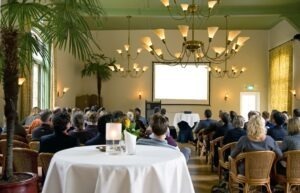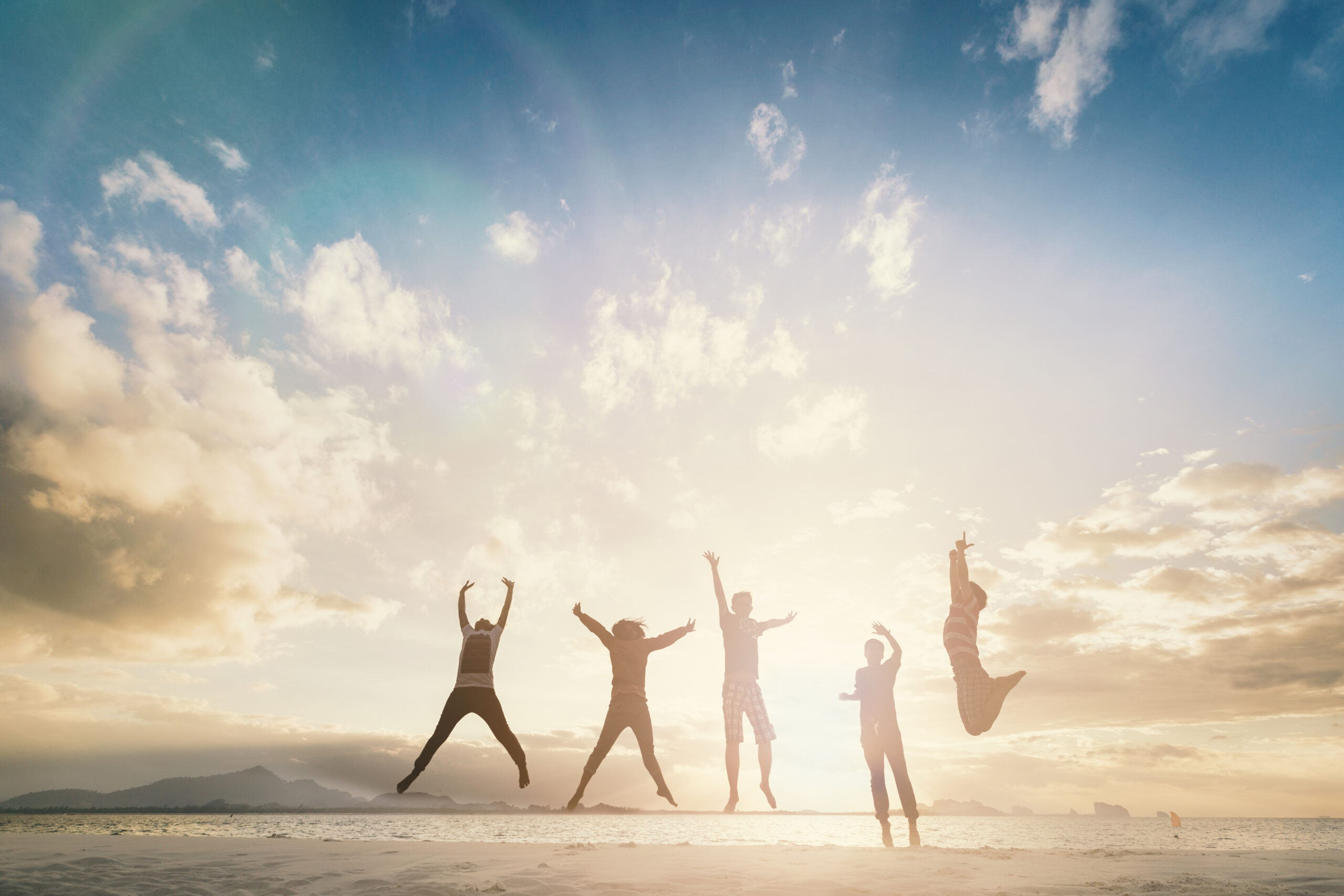Avoiding wellness washing and incorporating holistic well-being into meetings
Wellness is on every planner’s mind these days—with it, come concerns of “wellness washing.” The term comes from “green washing,” which is when a business or organization markets and presents itself as sustainable to a higher degree than it actually engages in sustainable practices. Wellness washing, then, is the situation in which a business or organization says it champions wellness but does not engage in practices that honor wellness to a truly impactful extent.
A group of professionals with expertise in wellness—its nuances, scope and impact—gathered for a recent Smart Meetings webinar, “How to Avoid Wellness Washing.”
These three experts were David T. Stephens, PMED, host of Return on Wellness Podcast, a 2021 Smart Meetings Meeting Professional of the Year award winner and a five-time winner of the “Fittest Male Meeting Prof”; Sepidah Eivazi, founder of Dawn of the Earth, a platform that combines somatic breathwork with custom tea blending, a recognized member of the Breathe Initiative at the Global Wellness Institute and a passionate advocate for holistic wellness; and Jeanine Cliffe, who strategically manages producing accounts for Four Seasons Hotels & Resorts, and also facilitates transformative wellness retreats, operates her own private practice that offers holistic wellness sessions and is a 2023 Smart Woman “Visionary” award winner.
To see the full discussion, view the webinar on demand.
Breaking Down “Wellness Washing”
Smart Meetings began with an application of the definition of wellness washing to meetings and events: that is, the tendency to throw in some wellness activities at the end of a meeting or event rather than weave it throughout. The speakers shared their own definitions of wellness.
 Stevens began, explaining that he has spent much of his life—personal and professional—in the fitness world. Yet, during the pandemic lockdown, he found that although he had all the time in the world to exercise and eat well, consistently, his mental health was at a low. “The lightbulb came on that there is more to wellness than being fit,” he said.
Stevens began, explaining that he has spent much of his life—personal and professional—in the fitness world. Yet, during the pandemic lockdown, he found that although he had all the time in the world to exercise and eat well, consistently, his mental health was at a low. “The lightbulb came on that there is more to wellness than being fit,” he said.
Eivazi jumped in, first by acknowledging Stevens’ openness for sharing his struggle with mental health. She explained that her company, Dawn of the Earth, was born during the pandemic. While it began as an eco-conscious tea company with aims to support farmers around the world, soon after its start she recognized the widespread awareness of wellness and began to transition her company’s model to incorporate somatic breathwork: a breathing technique that regulates the nervous system.
Throughout the panel, she reminds listeners that it always comes back to breath: “It’s all about your relationship with your nervous system and the way you learn and teach your body to regulate emotions.”
Cliffe holds extensive experience in many areas of wellness, with training in inner child healing, hypnotherapy, channeled visualization and energy healing. Her journey with wellness was a long one; she explains that, at the start, she viewed self-care as selfish. It took years of hard work and self-exploration to overcome that mindset. “I was giving a lot, and my anxiety was through the roof. I was starting to realize that I wasn’t showing up as my best self. We give so much to others. We love so much for others, but we really need to start with loving ourselves. By doing that, you are brightening your light. You are showing up as your authentic self.”
She noticed that many of the meeting planners she worked with were in the same boat: giving, giving, giving—and leaving very little for themselves. This led her to develop her wellness retreats.
The speakers all established the common understanding that meeting professionals must take care of themselves.
Read More: Why Meeting Planners Should Put Wellness First
The Impact
Fight-or-Flight
Cliffe explained that our nervous system is the key to wellness, and that practices like breathing exercises and meditation have an impact because they allow the nervous system to regulate.
The fight-or-flight response exists in humans because it allowed our pre-historic ancestors to survive by excreting adrenaline when they encountered dangerous situations; but in our modern day, the fight-or-flight response is triggered any time we feel stressed, upset or scared.
Due to the busy nature of a planner’s work, they often feel stressed. Cliffe says, “We are now constantly at this heightened state, and we don’t even realize that we are. We are excreting this adrenaline on a regular basis, which will then lead to actual physical elements within your body.”
Excessive adrenaline is a known contributor to both cancer and heart disease. Eivazi added that this is where breathwork comes in. By breathing intentionally, we can slow our heart rate, which signals to our brain that we are not in danger. Adrenaline drops.
Energy Fields and Emotion
 Cliffe also took time to explain energy fields. She said that people exchange electromagnetic fields when within three feet of one another.
Cliffe also took time to explain energy fields. She said that people exchange electromagnetic fields when within three feet of one another.
“Just like our cell phones connect to a tower to work, there’s a vibration, an energy, that’s connecting the two, that we can’t see, feel or touch, but it works. We’re the tower, and we have an energy field within us that’s expanding and vibrating,” she said.
She gave the example of walking into a room where people had just been arguing. When someone walks into that room, they notice that something feels off, but can’t put their finger on why. This is because they are picking up on the other people’s upset emotional states, which have altered their energy fields.
This is why it’s so important to have solid emotional regulation skills. Others—colleagues, attendees—will feed off the energy you put out.
Circadian Rhythm
Sleep, too, has a big impact. Eivazi explains, “One of the things that really matters about sleep is that it has a direct impact on our mood.”
Getting natural light in the morning, Stevens explained, tells your brain that it is time to be awake. Eivazi said that, each morning, she goes on a hike and watches the sunrise. Cliffe added that she does the same, even at events: At IMEX, she walks The Strip, coffee in hand, and takes in the natural morning light, which gives her the energy she needs to remain indoors, networking and in meeting rooms, for the rest of the day.
Wellness in Events
 With some basic understanding of how the body reacts to stress and what practices aid in holistic wellness, the speakers explored what a wellness-centered event looks like.
With some basic understanding of how the body reacts to stress and what practices aid in holistic wellness, the speakers explored what a wellness-centered event looks like.
Natural light was one of the most important elements to the speakers. Encourage attendees to get light, especially in the morning. During the meeting, if possible, it can do a lot to boost the energy in the room by taking attendees outside: encourage one-on-ones that take the format of a walk outside; take the group to a courtyard for networking. If it’s not possible to go outside, prioritize meeting spaces that bring in natural light.
Read More: 5 Innovative Strategies to Incorporate Wellness Into Your Meeting or Convention
Incorporate Stillness
Cliffe expressed the importance of implementing stillness into the agenda. By the end of a three-day session, everything attendees have experienced starts to blend together.
She suggests adding in 10-minute stillness breaks between activities, whether it be stretching, breathwork, or even just free time. By breaking scheduled activities up like this, attendees have a better opportunity to absorb what they’ve experienced and have a clearer memory of it all, later on.
Think Outside the Box
Eivazi explained that when you’re spending so much money on these events, you want people to leave remembering. This happens by providing content that is creative and innovative.
“Nobody is getting creative when you’re just sitting in a conference room listening and being talked at,” she said. “You get your creative juices flowing when you’re moving, when you’re meditating, when you’re doing breathwork, when you’re sitting with a cup of tea or talking to a good friend that inspires you. It’s finding ways to acclimate that in the meeting space so then when you walk out, you feel inspired and invigorated. And you can retain the information. It’s the ROI.”
Wellness in the RFP
 It all starts with the RFP—making it healthy from the beginning. Stevens said that planners must ask themselves a series of questions: “What are we looking to accomplish? What does that look like? What are the things we are going to offer people? Will that venue deliver on that objective, or not? … It’s about going down and checking that venue’s deliverables against your objectives.”
It all starts with the RFP—making it healthy from the beginning. Stevens said that planners must ask themselves a series of questions: “What are we looking to accomplish? What does that look like? What are the things we are going to offer people? Will that venue deliver on that objective, or not? … It’s about going down and checking that venue’s deliverables against your objectives.”
When a planner puts group wellness experiences into a proposal, Cliffe explained, the property will be able to specify who they work with and what space they can offer. That makes it easier for planners to see which things they want to include out of the venue’s wellness offerings along with prices they can work into their budget.
She added that planners can look into a property’s master practitioner programs—bringing in an outside expert, for everything from quick wellness breaks to scheduled activities or education sessions. “You’re the event planner. You’re not necessarily in the wellness space, so, you can rely on your partners and your hotel reps to have those partnerships.”
Checking In
Cliffe explained that one of the ways she takes care of herself is to have meetings with herself. “I block out time in my calendar to have a meeting with me, and what that looks like is to either go to a yoga class or go on a walk outside in nature. It could be 20 minutes, it could be an hour, but what I find is when I do that, what happens is I have all of these revelations. Then I come back [to my computer], and I’m revitalized for the project that I’ve just created in my head. I’m inspired and passionate about it and I’m really just excited to do it.”
Eivazi built on this, explaining that this quality rest is key. By 8:30 at night, she doesn’t touch her phone; no social media, no emails; she has an hour dedicated to checking in with herself before going to bed. “The most important thing is checking in with me: how did I show up that day?”
Eivazi emphasized that it’s important to set boundaries. By doing so, you’ll contribute to building a more wellness-focused culture throughout your network and set an example for others to do the same.
Read More: Hey, Busy Meeting Planner, You Feeling Stressed?
Wellness as a Culture
Normalizing wellness requires someone going first. That could mean giving attendees permission to head to bed early or join the group a little bit later in the morning, if they need. Stevens added that it’s important attendees feel comfortable not drinking alcohol if they choose, as well. Alcohol certainly has an impact on sleep quality—plus, some people just don’t want to drink. That’s their choice, and it deserves respect. To this end, planners can invest in ensuring that there are quality mock-tail or non-alcoholic options.
The speakers all agreed that self-care means different things to different people. Ultimately, it’s about giving people the opportunity to make the choices that will allow them to have the meeting that they need and want. Instead of wellness washing, wellness is woven into the culture of the meeting.
“All this wellness stuff…it’s inclusivity,” Stevens said. “It’s equity—giving those people who want to live their life in a certain way the opportunity to participate in the way they want to participate.”




